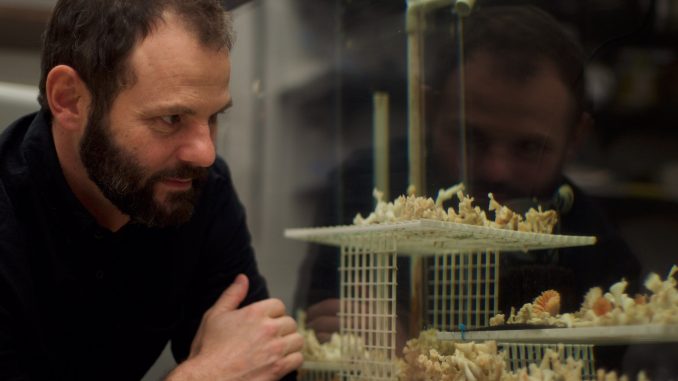
In second grade, Erik Cordes was assigned a marine biology project, where he collected fish, squid and jellyfish off his grandfather’s boat in Gulfport, Mississippi and pickled them in jars.
Cordes said he drew a phylogenetic tree to examine the organisms’ relationships, based off of one he found in a book.
“I always knew that I wanted to be a marine biologist, but I didn’t really know what that meant, probably until almost [graduate] school,” said Cordes, a biology professor at Temple.
After that project, his passion for deep-sea organisms grew and he went on to discover brine pools never before seen by humans in the Gulf of Mexico. His discovery of an underwater river in 2014, along with Steve Auscavitch’s discovery of another brine pool nicknamed the “Jacuzzi of Despair” in 2015, are some of the largest, deepest brine pools discovered in recent history.
Brine pools are small areas of water where high-density sea water comes up through the seafloor, said Auscavitch, a biology doctoral student who was on board the cruise that discovered the “Jacuzzi of Despair.” Brine pools are common in the Gulf of Mexico, but this one was unusually large — Auscavitch said they often see shallow brine pools less than a meter deep, while this pool resembled an entire underwater lake.
The nickname “Jacuzzi of Despair” refers to its warm temperature, and high salinity, compared to the cooler surrounding seawater.
The students and researchers from Cordes’ lab at Temple, along with Scott Wankel, chief scientist of the cruise that discovered the “Jacuzzi of Despair,” visited the pool on the 2015 cruise with diagnostic instruments to measure the various biological and chemical properties around the pool.
These pools are some of the most extreme environments on Earth with four to five times saltier water than the surrounding ocean, some of the saltiest waters on the planet.
“Brine pools are really interesting places, they have a lot of microbes that live there that don’t live anywhere else in the world, in any other habitat.” Cordes said. “It’s really just a totally unique and alien world. There are a lot of things that we can learn from studying the organisms that can survive in the brine pools and right on the edge that help us learn more about the possibilities for life on Earth, and other places also, other planets.”
Cordes was born in New Orleans, but he grew up just outside Boston. His love for deep-sea life developed more than 20 years ago during an internship his last semester at Southampton College, a division of Long Island University in New York, in which he organized jars of invertebrate for the college’s collection.
He realized that many of the jars were missing names. They were new species that no one had ever seen before, Cordes said.
“They all came from this collection from the deep sea off the coast of San Francisco, and I just thought that was awesome, and that was it,” Cordes added. “I only wanted to work in the deep sea after that.”
Although he said he wanted to travel and research California beaches, he was required to spend many of his days as an intern organizing formaldehyde-filled jars in a warehouse before he could develop his own projects.
Cordes began working in the Gulf of Mexico when he started his biology doctorate program at Penn State in 2000, which he completed in 2004.
“Dr. Cordes is probably one of the foremost researchers for deep sea biology,” Auscavitch said. “He’s focused on trying to understand how deep sea organisms are impacted by humans … and also trying to understand what causes deep water organisms to occur where they exist.”
“In my lab, the students are really the ones that lead the research.” Cordes said. “I’m writing proposals and helping to write papers, but they’re what really come up with a lot of the ideas, develop their own studies for their Ph.D., write their own papers, collect all their own data. It’s the stuff that got me excited about science, that’s why I’m trying to make sure they have a place to do the same thing.”
Moriah Thoman can be reached at moriah.thoman@temple.edu.



Be the first to comment